
Projectile Motion: Projectile motion is a fundamental concept in the field of mechanics that is crucial for understanding the motion of objects in two dimensions. It plays a significant role in understanding various engineering applications, such as the trajectory of missiles, the flight of sports balls, and aerospace engineering.
Projectile motion refers to the motion of an object that is projected from the earth’s surface into the air in a direction other than vertical and then moves under the influence of gravity alone along a curved path. It is a special case of curvilinear motion. Projectile motion involves the combination of horizontal motion characterized by a constant velocity and vertical motion influenced by gravity.
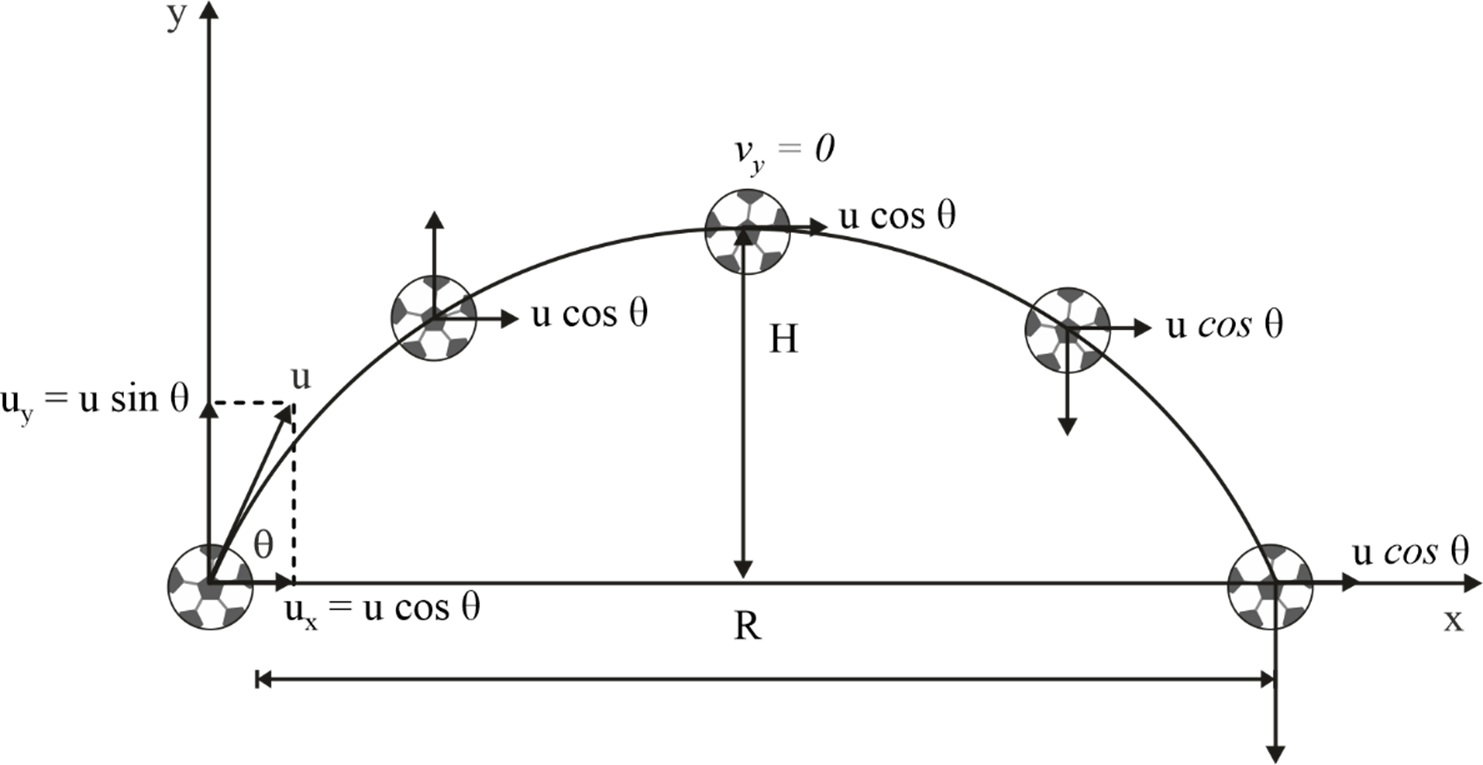 Motion variable in projectile motion along x and y direction is given as;
Motion variable in projectile motion along x and y direction is given as;
| Motion Variable in x Direction | Motion Variable in y Direction |
| a x = 0 | a y = ± g |
| Initial velocity u x = u cosθ | Initial velocity u y = u sinθ |
| Velocity at any time t; v x = u x | Velocity at any time t; v y = u y + a y t |
| Distance covered in time t; s x = u x t | Distance covered in time t; s y = u y t + (1/2)a y t 2 |
Terms related to Projectile Motion
Understanding the mathematics behind projectile motion is essential for solving problems and analysing real-world scenarios. Here are the terms and fundamental equations for projectile motion:
- Trajectory: The trajectory is the path followed by a projectile as it moves through the air. It is typically a curved path due to the influence of gravity. Trajectories can vary in shape, depending on the angle of projection and initial velocity.
- Velocity of Projection (u): The initial velocity is the speed and direction at which a projectile is launched.
- Angle of Projection (θ ): The angle of projection, also known as the launch angle, is the angle between the initial velocity vector and the horizontal axis.
- Time of Flight (T): The time of flight is the total time that a projectile is in motion from the moment it is launched until it hits the ground or a target. It is a fundamental parameter used to analyse projectile motion.

Motion from 1 to 2 in y direction;
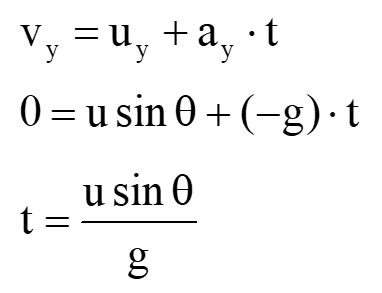
Since the projectile takes twice as long to travel from point 1 to point 3 compared to the time it takes to go from point 1 to point 2. Therefore,
Total time of flight, T = 2.t
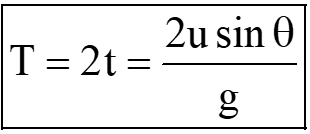
- Vertical Motion: The vertical motion of a projectile refers to its movement along the vertical axis. The force of gravity affects the vertical motion, causing the projectile to rise and fall. Vertical motion is governed by equations that describe displacement, velocity, and time in the vertical direction.
-
Maximum Height (H):
The maximum height of a projectile is the highest point it reaches above its point of launch. It occurs when the vertical velocity becomes zero.

Motion in vertical direction from 1 to 2;
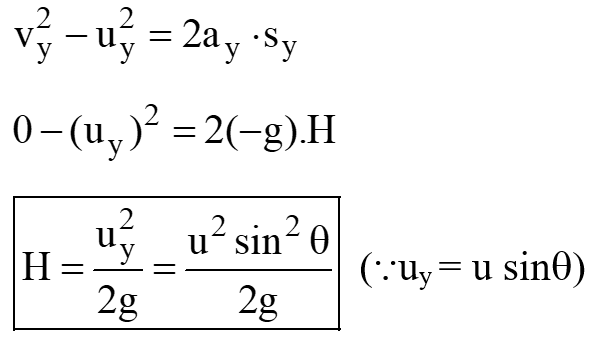
- Horizontal Motion: The horizontal motion of a projectile refers to its movement along the horizontal axis. In the absence of horizontal forces (ignoring air resistance), the horizontal motion is uniform, meaning there is no acceleration in this direction.
-
Range:
The range is the horizontal distance travelled by a projectile from its initial position to the point where it hits the ground.

Motion in horizontal direction from 1 to 3;

Note:
-
- From the above expression, it is clear that for a given launch velocity u, the range will be maximum if the value of the term sin 2q is maximum.
sin 2θ = 1
sin 2θ= sin 90°
θ = 45°
The range in projectile motion will be maximum when the launch angle is 45 degrees, and the value of the maximum range will be:
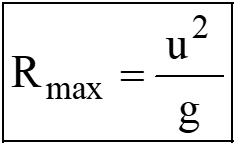
-
-
A projectile can have the same range for two angles of projection, q
1
and q
2
, if these angles are complementary, meaning their sum is 90 degrees.

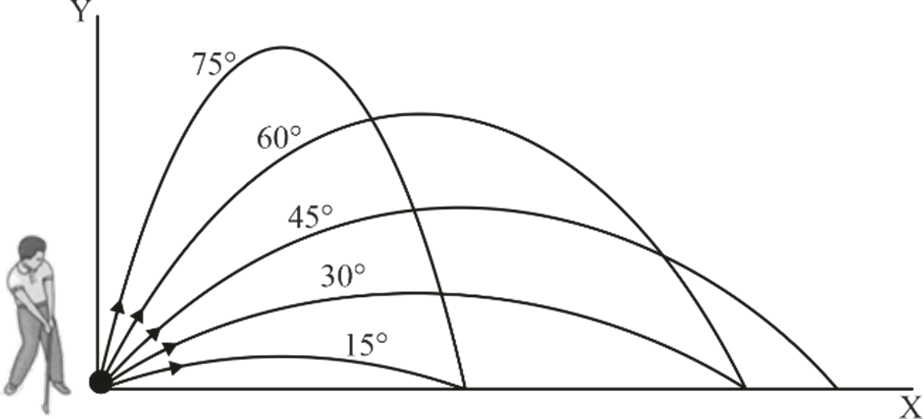
-
A projectile can have the same range for two angles of projection, q
1
and q
2
, if these angles are complementary, meaning their sum is 90 degrees.










